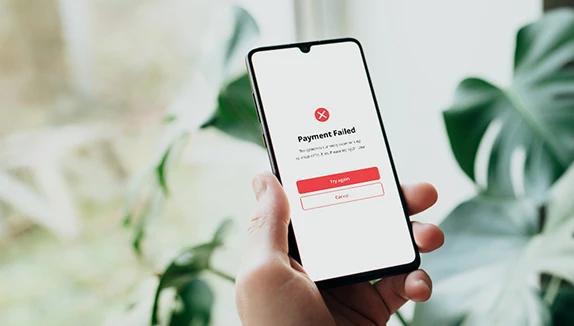In IT, where much of the work is sedentary, we all understand the importance of staying physically active. Nobody appears to dispute the importance of physical activity for health, and yet, we frequently neglect the importance of mental health.
Numerous scientific studies have shown that mental fitness is as important as physical health. The research "Impact of Mental Health on Wellness in Adult Workers" by two South Korean professors, Won Ju Hwang and Hyun Hee Jo, concluded that depression, stress, and anxiety have a negative impact on wellness, while self-efficacy, well-being, and perceived health status had a positive effect.
Poor mental health can affect productivity, relationships, physical health, and overall life satisfaction. Therefore, intellectual health support and care are crucial to proper well-being.

The role of work-personal boundaries in mental health and well-being
The demands of the IT industry often result in long hours, high-pressure environments, and constant connectivity, making it difficult to disconnect and recharge. The COVID-19 pandemic further exasperated this issue as remote work became the norm. For some, the lack of physical separation between working and living spaces has increased stress levels and decreased overall wellness.
The separation of work and personal life is paramount in maintaining mental health and overall well-being within the workplace. Remaining constantly connected to work through emails, messages, and notifications prevents individuals from fully disconnecting and enjoying personal time, leading to a chronic state of stress and overwork.
To prioritize well-being, it is crucial to establish clear boundaries and carve out dedicated spaces and times for work and personal life. Setting aside specific hours for work and leisure helps maintain a healthier balance and prevents work from encroaching on personal time.

Burnout: the consequence of imbalanced work and personal life
A lack of work-life balance can lead to a destructive condition called burnout. Burnout is characterized by physical and emotional exhaustion, withdrawal, and decreased sense of accomplishment. The demanding nature of IT work, and blurred work-life boundaries put employees at greater risk of burnout.
Long hours, overwork, and constant pressure to meet deadlines and deliver results all contribute to burnout. When work takes it all and personal time is neglected, individuals have few opportunities to recharge. The chronic stress and fatigue associated with burnout can lead to decreased productivity, weakened relationships, and a decreased sense of purpose and fulfilment.
For early intervention and prevention, recognising the signs of burnout is critical. Some common symptoms include increased irritability, decreased motivation, chronic fatigue and feeling disconnected from work and life. Prioritising self-care, setting boundaries, and seeking support when needed is critical for IT professionals.
Preventing burnout requires a comprehensive approach that includes maintaining a healthy work-life balance, implementing stress management strategies, and having the supportive workplace also play a key role in fostering work life balance through policies that encourage time off, flexible schedules, and a culture that values wellness.

Recognizing the importance of disconnecting
As the negative consequences of neglecting work-life balance become more apparent, so too does the need to seriously address the issue. People are beginning to realize that a harmonious integration of work and personal life is essential for overall happiness, productivity, and long-term success.
With the growing ‘always on‘ culture where workers are expected to respond to emails, phone calls, and texts after work has ended, more legislation for disconnecting from work needs to be in place. The 'right to disconnect' is becoming a more popular issue. It refers to legislation that allows employees to disconnect from their work and not receive or answer any work-related emails, calls, or messages outside of normal working hours. It establishes boundaries between a person’s work and life and protects them against any negative repercussions for disconnecting from their work.
Many countries have already implemented their own right to disconnect legislation nationally, such as France (2017), Italy (2017), Philippines (2017), Spain (2018), Belgium (2018/2022), Ireland (2021), Canada (2021), Portugal (2022). While this right has not yet passed into EU law, a resolution passed in January 2021 called for an EU directive to be established.
By understanding the science and legal framework, certain organizations are starting to proactively address work-life balance challenges and create supportive environments that prioritize employee well-being. These measures help to protect mental health, reduce burnout, and promote a healthy work environment.

Strategies for achieving balance
To assist people in overcoming obstacles and achieving a healthy balance, scientists and medical professionals provide insightful counsel and useful practical techniques. By putting these strategies into practice and making your health a priority, you can achieve a better and more satisfying work-life balance.
- Set boundaries. Establish clear boundaries between work and personal life. Define specific work hours, create designated workspaces, and limit work-related activities outside those boundaries.
- Practice self-care. Prioritise self-care activities to recharge and rejuvenate. Engage in regular exercise, practice mindfulness or meditation, and dedicate time for hobbies, relaxation, and socializing.
- Manage workload and prioritize. Learn to manage your workload effectively by setting realistic goals, prioritizing tasks, and delegating when necessary. Avoid overcommitting and learn to say no to prevent overwhelm.
- Disconnect from technology. Take intentional breaks from technology to disconnect from work-related notifications and messages. Establish tech-free times, such as during meals or before bedtime, to focus on personal relationships and restful sleep.
- Seek support and communicate. Don't hesitate to seek support from colleagues, supervisors, or mental health professionals. Openly communicate your needs, challenges, and concerns to create a supportive work environment.
- Plan and take vacations. Schedule regular vacations or time off to recharge and rejuvenate. During these periods, completely disconnect from work to fully enjoy leisure and personal activities.
- Foster work-life integration. Explore flexible work arrangements that allow for better work-life integration. Negotiate flexible schedules and remote work options, and explore opportunities for job sharing or part-time work.
See what works best for you, but remember that finding an equilibrium needs continual effort and adaptability.

Personal experience
For me personally, working for 2.5 decades under constant stress, without clear working hours and with blurred boundaries between work and personal life has led to certain problems both with health and in relationships with loved ones.
For a long time, I did not notice the problems that were accumulating and how they affected my existence. I realized this too late, probably when I was already 40. Unfortunately, I can’t return what I’ve already lost, but for now, I’m at least trying to hold what’s left.
This is what prompted me to tell you these things to warn you. I really want people to realize the importance of this issue as early as possible and start looking after their well-being and mental health before it's too late.
At the moment, I've been working at TestDevLab for 3 years now, and I'm happy to say that I've had no work-life balance issues during this time. I am glad that TestDevLab recognizes the importance of mental health and the impact it has on the well-being of employees and their performance at work. Therefore, the company is constantly working to identify areas for improvement and maintain a healthy work-life balance that motivates employees to be the best version of themselves in the workplace and beyond.

The bottom line
It's important to remember that work-life balance is not a luxury, it's a necessity. The proper balance allows individuals and the IT industry as a whole to benefit from increased productivity, improved mental health, and greater job and life satisfaction.
Let's prioritize our well-being, set healthy boundaries, and foster a supportive work environment. In doing so, we pave the way for a resilient, thriving, and sustainable IT industry that values the holistic well-being of its professionals.
Take care and stay healthy!
Key takeaways
- Maintaining clear work-personal boundaries is essential in the IT industry to prevent stress, overwork, and burnout, which are exacerbated by constant connectivity and blurred lines between work and personal life.
- Burnout, caused by an imbalance between work and personal life, leads to emotional and physical exhaustion, decreased productivity, and strained relationships; recognizing its signs early is key to prevention.
- The "right to disconnect" is becoming increasingly important, with legislation being introduced in several countries to protect employees from work-related stress outside of normal working hours, fostering a better work-life balance.
- Practical strategies such as setting boundaries, prioritizing self-care, managing workload, and seeking support are crucial for achieving and maintaining a healthy work-life balance.
Are you an IT professional looking for a supportive work environment? Check out our current open positions. TestDevLab understands the importance of disconnecting and making self-care a non-negotiable part of your routine.

